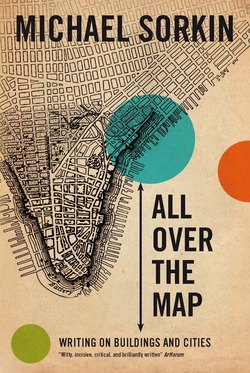Читать книгу All Over the Map - Michael Sorkin - Страница 32
На сайте Литреса книга снята с продажи.
Оглавление26
Density Noodle
What is a city? They’re certainly easier to recognize than to describe. Traditional definitions tend to be dense with comparison, per the useless description in Webster’s: “a large town.” As to a town, the dictionary has it as “a thickly populated area, usually larger than a village, having fixed boundaries, and certain local powers of government.” A village is “a small community or group of houses in a rural area, larger than a hamlet and usually smaller than a town.” A hamlet is, of course, “a small village.”
Spiro Kostoff does somewhat better than this S, M, L, XL classification, describing nine characteristics of cities. These include, among other things, “a certain energized crowding of people”—felicitous phrase—“places that tend to come clustered with other towns, places that are circumscribed in some way, and places that have a dynamic relationship to a latifundian periphery.” Arguably, each of these descriptors has a component of density but—even aggregated—none of them truly offers a sufficient definition of either a city or of the urban.
Wading through the fuzzy and inevitable tautologies of these descriptions, some consistency emerges: the city is a function of size, limits, governance, hierarchy, and crowding. Of these elements, “crowding” would seem to be the most potentially nuanced, the best candidate for further examination of the special qualities of the urban. However, before investigating the ramifications for urbanism of this notion of density, it is important to be clear about the reasons for inquiry, and why the mere thickening of settlement is an insufficient conceptual instrument with which to practice urbanism.
